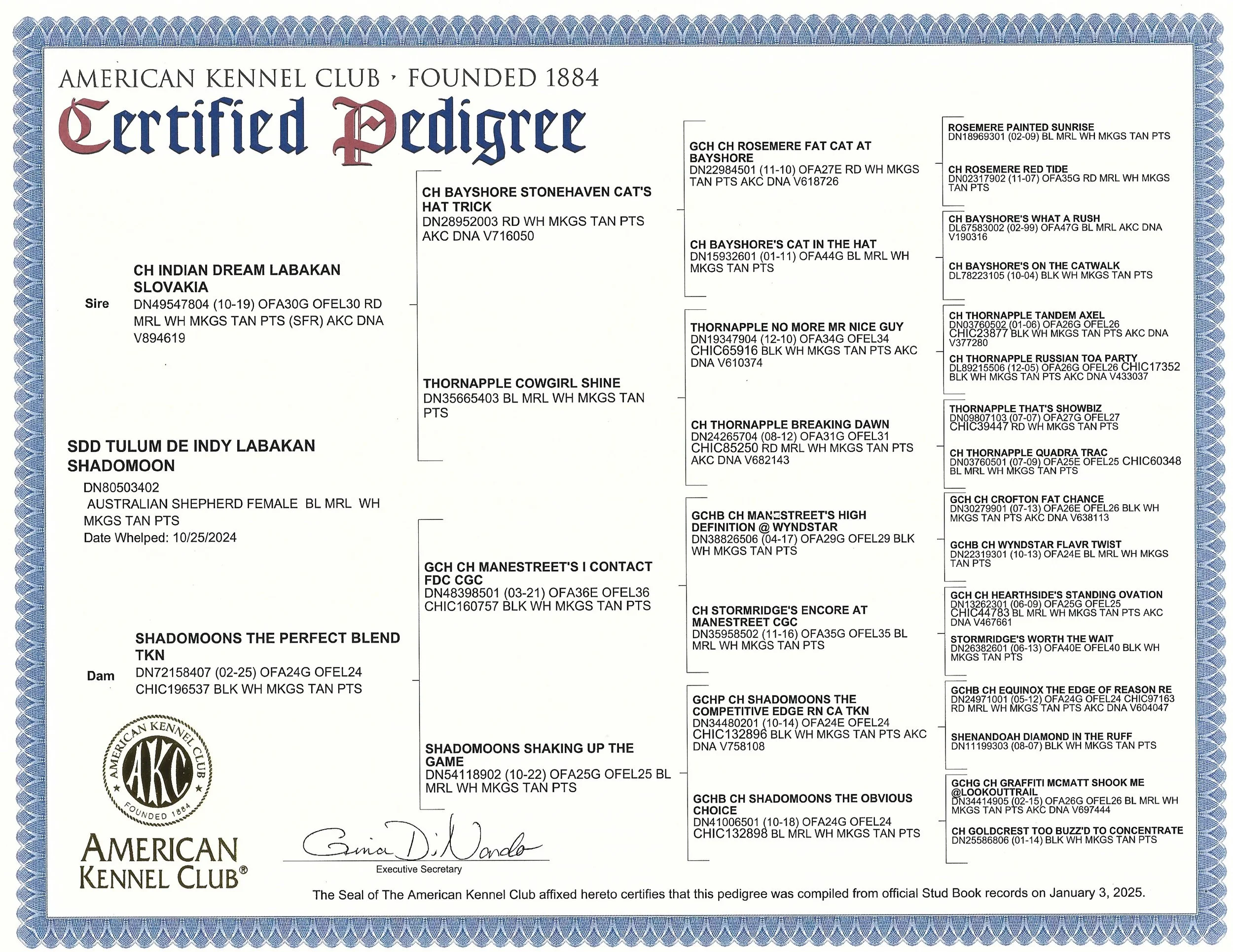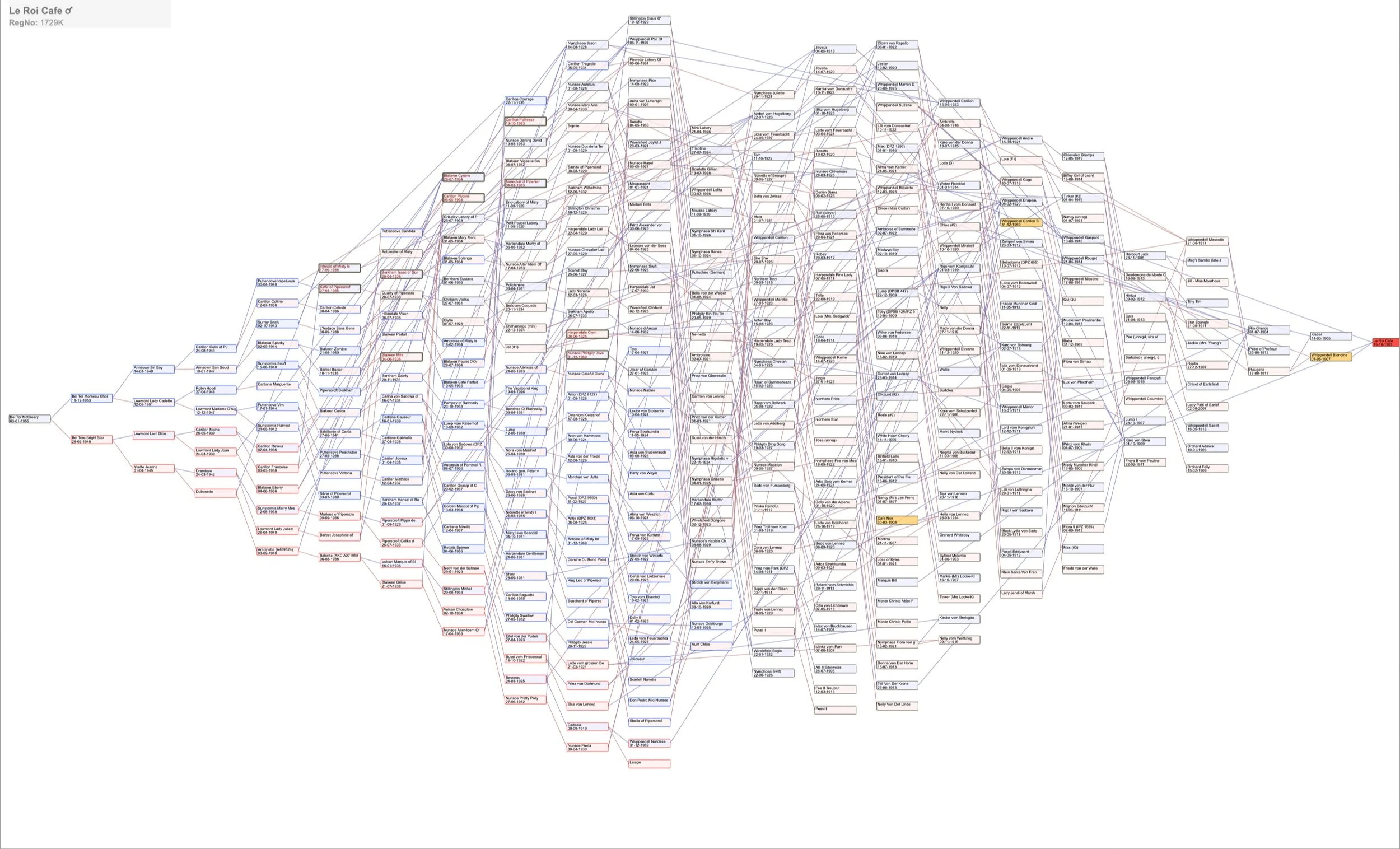Ethical Breeding Practices in Designer Dogs: A Scientific Rebuttal
Abstract
Designer dog breeding, when performed responsibly, adheres to rigorous health testing, genetic screening, and ethical standards that often surpass those seen in traditional purebred breeding. This paper addresses misconceptions surrounding the breeding of hybrid dogs, specifically Australian Mountain Doodles and Golden Mountain Doodles, refuting claims of irresponsibility and greed. Using scientific evidence, it highlights the benefits of hybrid vigor, ethical pricing, and the importance of responsible breeding practices.
Introduction
The intentional breeding of hybrid dogs, commonly known as "designer dogs," has been subject to scrutiny by some members of the public. Critics argue that such breeding is reckless, driven by profit, and contributes to health issues. However, scientific evidence suggests that well-managed hybrid breeding programs can enhance genetic diversity, reduce the prevalence of hereditary diseases, and create healthier, more adaptable companions (O’Neill et al., 2013). This paper seeks to dispel myths regarding the ethicality and genetic integrity of designer dog breeding.
History of Breeding and Recognition of New Breeds
The concept of breeding dogs for specific traits has existed for centuries, with humans selectively pairing dogs to enhance desirable characteristics such as temperament, work ethic, and physical traits. Many breeds now recognized by the American Kennel Club (AKC) were once considered "designer dogs" before gaining formal recognition through sustained breeding programs. The AKC itself, established in 1884, has influenced societal views on breed legitimacy, yet its breed recognition process is based on long-term breeding consistency rather than inherent superiority (American Kennel Club, 2021). Designer breeders follow similar methodologies to refine traits and establish new breeds, demonstrating that their practices align with historical breeding traditions rather than diverging from them.
Hybrid Vigor and Genetic Health
Hybrid vigor, or heterosis, refers to the increased health and vitality observed in first-generation crosses between two distinct breeds. Research indicates that mixed-breed dogs often have lower incidences of breed-specific hereditary disorders compared to purebred counterparts (Parker et al., 2017). While no breeding program can eliminate all genetic risks, responsible breeders utilize extensive DNA testing, OFA (Orthopedic Foundation for Animals) evaluations, and temperament assessments to minimize inherited conditions (Leroy, 2011). Contrary to claims of recklessness, ethical designer dog breeders prioritize genetic health through selective pairing and comprehensive screening.
The Role of Genetic Testing in Responsible Breeding
Modern genetic testing has revolutionized responsible breeding by enabling breeders to identify and mitigate hereditary diseases. Tools like Embark and Wisdom Panel provide comprehensive screenings for conditions such as degenerative myelopathy, progressive retinal atrophy, and hip dysplasia. Ethical breeders leverage these insights to ensure that parent dogs are not only physically sound but also genetically compatible, minimizing risks for future litters.
Temperament and Behavioral Advantages of Hybrids
Behavioral traits in dogs are influenced by genetics, environment, and socialization. Hybrid breeding often selects for ideal temperaments, blending the best traits from parent breeds. Many designer breeds, such as Australian Mountain Doodles, inherit intelligence and trainability from Poodles while retaining the loyalty and affectionate nature of Bernese Mountain Dogs. This balanced temperament reduces breed-specific behavioral issues, such as excessive herding or separation anxiety, and creates dogs well-suited for family life and therapy work.
Debunking the "Mutts vs. Purebred" Myth
A misconception is that designer dogs are overpriced mutts. However, unlike unplanned mixed-breed dogs, designer breeds are intentionally developed through structured breeding programs, like Stokeshire’s, that aim to achieve specific predictable traits while lowering COIs. Very similar to how historically recognized breeds were developed, but without the culling that was once practiced and was once considered ethical - as it was believed to improve bloodlines, ethical hybrid breeding follows generational planning and health screenings to refine characteristics and ensure the stability of traits over time.
The Issue of Genetic Bottlenecks in Purebred Dogs
Purebred dogs often suffer from high coefficients of inbreeding (COI), a measure of how closely related the parents are. This inbreeding leads to genetic bottlenecks, where a limited gene pool increases the likelihood of hereditary disorders (Leroy, 2011). Many purebred lines have been selectively bred for specific traits at the cost of genetic diversity, perpetuating diseases such as hip dysplasia, progressive retinal atrophy, and cardiac conditions (Farstad, 2018). Line breeding, a common practice in purebred breeding, further compounds these risks by continuously narrowing the gene pool. Ethical hybrid breeding introduces new genetic diversity, mitigating these concerns and promoting healthier canine populations.
The Ethical Standards of Responsible Breeding
Responsible breeders adhere to rigorous ethical standards, including health guarantees, spay/neuter contracts, lifetime breeder support, and responsible rehoming policies. These measures ensure that puppies are placed in suitable homes and receive lifelong care. Unlike unethical breeding operations, responsible breeders prioritize the well-being of their dogs over profit, actively working to improve breed health and longevity.
Ethical Pricing and Breeder Responsibility
The cost associated with responsibly bred hybrid dogs reflects necessary investments in genetic testing, veterinary care, socialization, and ethical breeding practices. Unlike irresponsible backyard breeding, ethical programs follow strict guidelines that ensure the health and well-being of both parent dogs and their offspring (Farstad, 2018). Pricing structures account for high-quality nutrition, early neurological stimulation, professional staff, luxury nursery, transportation costs for guardian-dogs, and extensive behavioral assessments—factors that significantly improve a puppy’s long-term well-being. Accusations of "greed" fail to consider these substantial expenses and the breeder’s dedication to improving canine welfare and producing the beset possible dogs for our clients.
Conclusion
The assertion that designer dog breeding is unethical and driven purely by financial motives ignores substantial scientific evidence supporting responsible hybrid breeding. By implementing rigorous genetic health screening, emphasizing hybrid vigor, and maintaining high standards of care, reputable breeders contribute positively to canine welfare. Misconceptions surrounding designer breeds often stem from misinformation rather than empirical evidence. It is essential to recognize and support responsible breeding practices that prioritize health, temperament, and ethical stewardship.
References
American Kennel Club. (2021). History and mission. https://www.akc.org/about/history/
Farstad, W. K. (2018). Reproduction in companion, exotic, and laboratory animals. Elsevier.
Leroy, G. (2011). Genetic diversity, inbreeding and breeding practices in dogs: Results from pedigree analyses. The Veterinary Journal, 189(2), 177-182. https://doi.org/10.1016/j.tvjl.2011.06.016
O’Neill, D. G., Church, D. B., McGreevy, P. D., Thomson, P. C., Brodbelt, D. C. (2013). Longevity and mortality of owned dogs in England. The Veterinary Journal, 198(3), 638-643. https://doi.org/10.1016/j.tvjl.2013.09.020
Parker, H. G., Dreger, D. L., Rimbault, M., Davis, B. W., Mullen, A. B., Carpintero-Ramirez, G., Ostrander, E. A. (2017). Genomic analyses reveal the influence of geographic origin, migration, and hybridization on modern dog breed development. Cell Reports, 19(4), 697-708. https://doi.org/10.1016/j.celrep.2017.03.079










